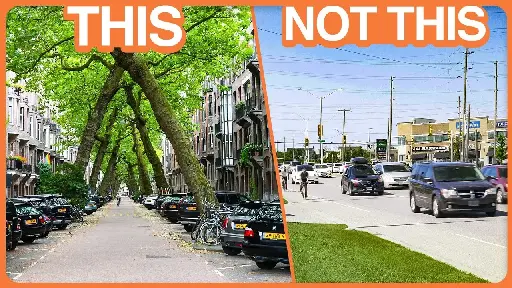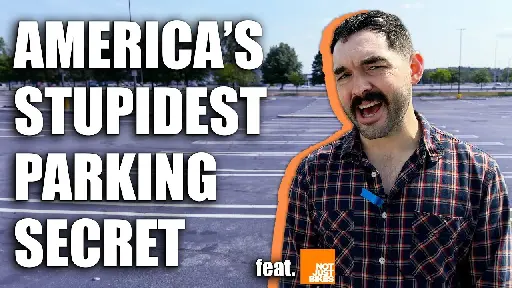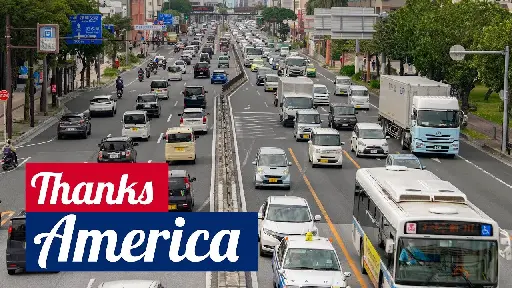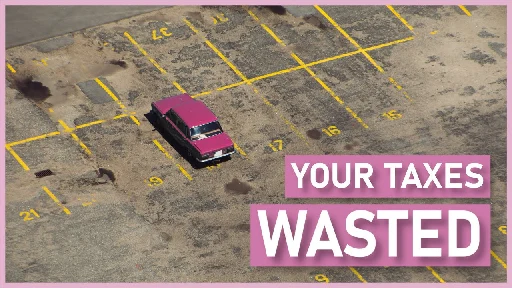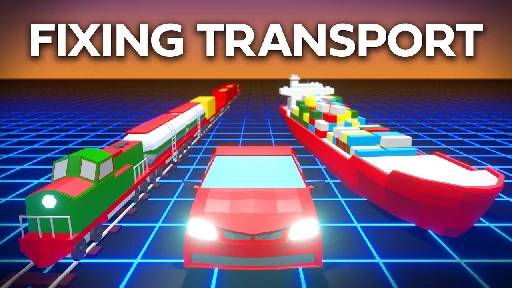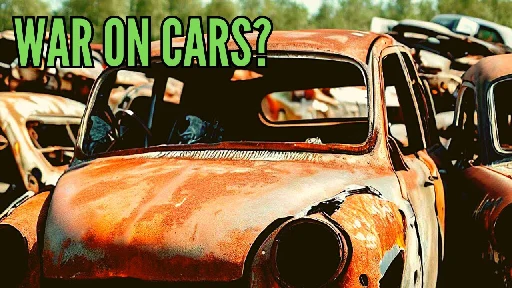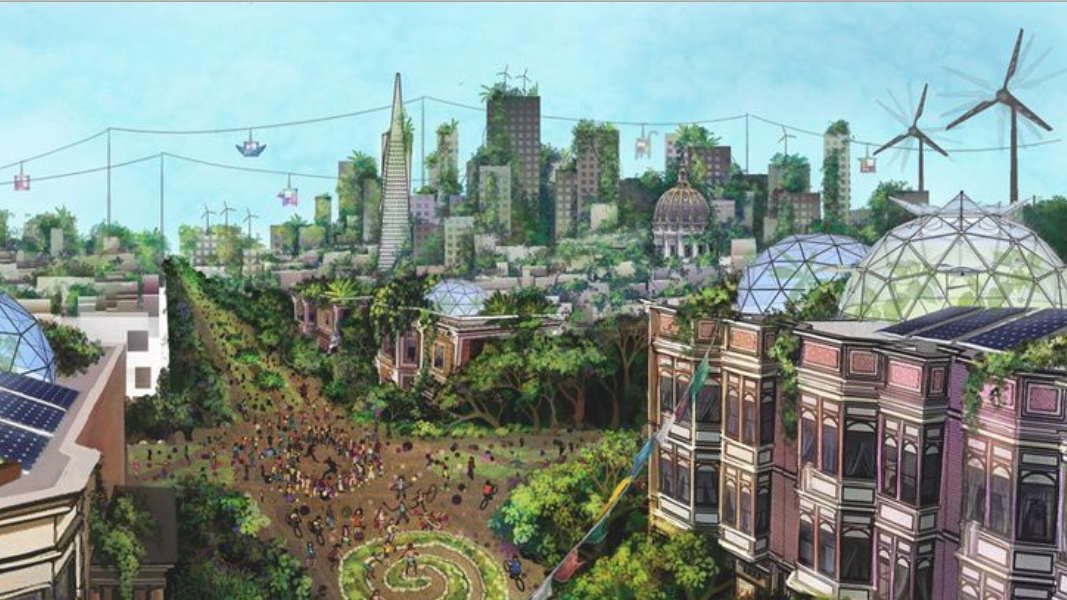
Alt Urbanism
- Cleveland
Cleveland
"In those metros, pedestrian-centered places are within easy reach of people of color, people with low income, and people with less educational attainment. Cleveland topped the report's "Social Equity Index" rankings; Baltimore, Cincy, Detroit and Philly also made the top 10, while St. Louis landed at number 11."
"Cleveland's current mayor has announced an initiative to transform the Ohio community into a 15-minute city."
https://usa.streetsblog.org/2023/02/07/americas-most-equitably-walkable-city-is-cleveland
- Culver City's Transit Was Doomed From The Start - A Harm Reduction Approach (Part 1)m.youtube.com Culver City's Transit Was Doomed From The Start - A Harm Reduction Approach (Part 1)
If you look at a city undergoing change the same way you look at a person undergoing change, you're more likely to be understanding of the underlying issues ...
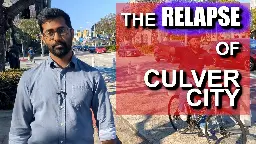
I loved the parallel between transit strategies and public health. Might be a useful approach in many areas given the resistance to reducing car infrastructure that we see in many areas.
- Can American cities save themselves? This one thinks so
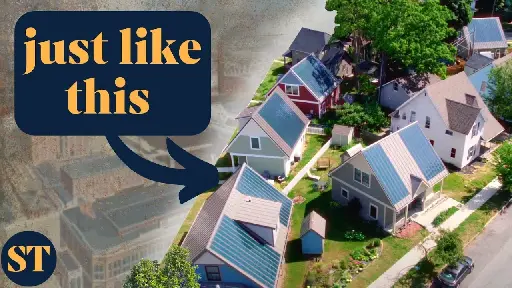
YouTube Video
Click to view this content.
- Plans approved to turn Birmingham car park into urban farmwww.bbc.com Plans approved to turn Birmingham car park into urban farm
The upper floors of the car park are to be turned into vegetable plots and greenhouse space.
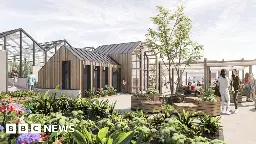
- To Feel Less Heat, We Need More Trees in Our Citieswww.sierraclub.org To Feel Less Heat, We Need More Trees in Our Cities
This column originally appeared in the Chicago Sun-Times on July 11, 2023. All of us suffered last week through day after day of the hottest average temperatures ever recorded on Earth. Now imagine it had been 10% hotter where you live.
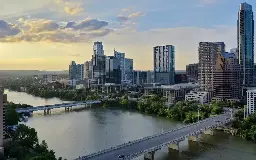
- Light pollution is the easiest pollution to fix — so why aren't we doing it? "If we can't do this to simply not waste light... then we will have failed the fundamental test of progress and change i...www.salon.com Light pollution is the easiest pollution to fix — so why aren't we doing it?
Light pollution is an existential threat that belongs in the same conversation as climate change, experts say

- To Fight Heat, Pacoima Started To Test A New ‘Cool Paint’ Last Year. The Results Are Becoming Tangible

cross-posted from: https://lemmy.world/post/2051579
> laist.com > > The climate crisis is pushing average temperatures higher, and driving longer and hotter heat waves. And all the pavement in our cities only makes it worse. > > But “cool pavement” may be one tool to help. It is a coating that can be applied to the surface of asphalt streets that can reflect solar radiation, rather than absorb it. But cooling the surface of a street doesn’t automatically mean a cooler community. > > Pacoima is one of the hottest neighborhoods in metro L.A. And last year, they decided to test this technology. Ten square blocks of streets, an elementary school yard and a basketball court were covered with “cool paint." This week, we checked on the results. > > Keeping it cool > > As temperatures climbed to 95 degrees on a recent afternoon in Pacoima, the surfaces with “reflective paint” were 10 degrees cooler than regular old asphalt. > > Preliminary research by the company that installed the paint, GAF Roofing, shows the pavement is helping to cool the ambient temperature of the whole 10-block area — and sometimes beyond — by as much as 3 degrees, possibly more. > > But these “cool paint” technologies are new, so it’s not yet clear how much they can make a difference when it comes to our actual experience of heat. One thing that is clear: These paints are no silver bullet, and no replacement for improving tree cover, shade and green space. > > Measuring the impact of cool pavement > > GAF uses a modified electric golf cart to see how the cool coating may affect the human experience of heat in the neighborhood. > > Eliot Wall, director of GAF's cool pavement, drives an electric golf cart that takes measurements of the cool pavement, including surface temperature, ambient air temperature and wind. > > Challenges with pavement > > Cool coatings may reduce the surface temperature of pavement dramatically, but actually make it hotter immediately above the surface, where people are. That’s what a 2020 study out of UCLA found with the type of cool pavement L.A. has used on some 10 million square feet of city streets over the last six years. > > The coatings the city has used — put in the most simple terms — are asphalt-based with white paint mixed in, allowing them to reflect instead of absorb solar radiation. > > But the coating in the 10 square blocks of Pacoima are acrylic-based. Eliot Wall, director of GAF Roofing's cool pavement program, said the company's proprietary mix of materials reflects solar radiation in long waves, rather than short waves — eliminating that increase in temperature just above the surface. > A young woman with light brown skin, wearing a green shirt and jeans poses next to a sign in a park that reads "Hubert H. Humphrey Memorial Recreation Center Licensed Child care center welcomes you; city of las angeles recreation and parks department." > > Melanie Paola Torres, community organizer with Pacoima Beautiful, at the park where a basketball court, parking lot and surrounding streets have been painted with a cool coating. > > ! > > “What's unique about this coating is that there's an additive in it that actually reflects in a different portion of the radiation spectrum,” said Wall. “It’s not reflecting the visible light in the UV that can cause more heat and damage; it's actually in the long wave. So we're not seeing that same impact.” > > The project where this coating has been applied is part of a partnership between GAF and community group Pacoima Beautiful, as well as the city of L.A., to better understand the impacts of cool pavement on the experience of heat and deploy cooling technologies in one of the city’s hottest neighborhoods. > > Melanie Paola Torres, who grew up in Pacoima and is now a community organizer with Pacoima Beautiful for the cool pavement project, said community members are feeling a positive difference in the areas where the coating has been applied — and they want more. > > “We’ve seen things that do work,” Torres said. “So we just keep hoping to add and stack onto that and really create a climate-resilient community.“ > > She said the next step is to pilot “cool roofs” in the area, so residents can benefit from the cooling effect at home. > > Still, Torres and other experts know this is just one tool in the toolbox — research shows expanding tree cover, shade and removing pavement and adding green space are the ideal strategies when it comes to both cooling communities and improving quality of life.
- Which cities have the most drinking fountains?citymonitor.ai Which cities have the most drinking fountains?
Summer has seen heatwaves hit Europe and the US, with residents and tourists seeking the nearest drinking fountain.
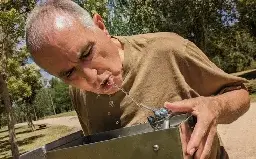
- About Strong Townswww.strongtowns.org About Strong Towns
Learn more about Strong Towns, the international movement to grow stronger and more financially resilient cities.
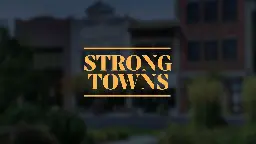
I just wanted to introduce this group to Strong Towns, a non profit devoted to making development make sense. I worked with the founder of Strong Towns years ago when the idea was new.
The issues and framework of Strong Towns transcend partisan politics and instead gathers people under the banner of demanding that our towns be built to upon principles most any reasonable person would want to see enacted. Principles like: development responsive to local needs and financial transparency.
Please check them out.
- It's the cars 🚗

Source: https://www.seattle.gov/documents/Departments/OSE/ClimateDocs/GHG%2520Inventory/2020_GHG_Inventory_Oct_2022.pdf
- Street trees are planted incorrectly in many cities!inv.vern.cc Street trees are planted incorrectly in many cities!
Here's a better way for cities and towns to plant street trees. When they're given more space for their growing roots and trunks, they live longer, healthier lives and are more beneficial to our urban environment. Too often, the trees are planted in very small sidewalk cutouts and are expected to ...
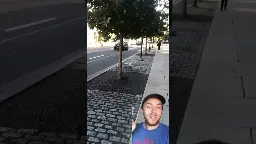
Additionally: 99% of the time they specifically plant non-fruiting trees.
Let communities grow their own food!
- Seine to open for public swimming after Paris Olympics, mayor sayswww.theguardian.com Seine to open for public swimming after Paris Olympics, mayor says
Three monitored river bathing zones in the French capital will open in 2025, said the mayor, Anne Hidalgo
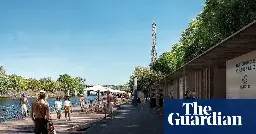
- This incredible greenhouse by JohnnyBagels (w/ Link to build video!)
cross-posted from: https://slrpnk.net/post/689547
> >Parallelogram frames, aluminum flashing and polycarbonate glazing! > https://www.youtube.com/watch?v=NLaZ82jdJ_c
- The solarpunk building where I'm working in

I usually work from home, but at the moment I'm working in that zero-energy building. It's not the most beautiful, but it actually generates more energy than it consumes! There is a small garden on the rooftop with vegetables for employees to pick up and wooden picnic tables. The wooden structure holds solar panels and provide shading for the sun.
It could be better looking, but definitely solarpunk in spirit I think. Also, I like that it functions as a normal office building, it's not something built for show-off, but actually practical.
There's info about the building at this website (in Spanish, tho).
P.S. Maybe we need an !architecture community?
- And not a car in sight...

And not a car in sight...
Laisvės Alėja (Independence Way) is a fully pedestrianised street that runs east-west across most of Kaunas.
It is lined with shops, restaurants, cafe/bars, museums, outdoor dining areas, and historical sites (such as the old Presidential Palace, which was used from 1918 until the 1930s). Three-to-four floors of apartments can be found above the shops.
A small tree-lined park can be found in the middle of the street, with bicycle paths and outdoor dining areas on the sides.
During summer, the bars and cafes fill up as lunch approaches, and they remain busy well into the evening (with twilight sometime around 10:30pm).
Cuisine varies from traditional Lithuanian fare (such as Cepeliniai and Saltibarciai) to modern Italian, Turkish, Georgian, Japanese, American, Thai, and more. (That includes these delicious burritos and nachos.)
The street begins as Vilnius Gatve at the town hall square in the old city, just near Kaunas Castle and the confluence of the Nemunas and Neris Rivers.
It continues for roughly 2.3 kilometres across almost the entire length of the city, to the historic Church of St Michael the Archangel (Sv. Arkangelo Mykolo Baznycia).
It is bisected by a second pedestrianised street running north-south that links it to the war museum, the Zalgris basketball arena, and the university.
\#Kaunas #Travel #Tourism #Urbanism @urbanism@slrpnk.net @fuck\_cars@lemmy.ml #cycling #bikes #cycle #bike #pedestrian #walkable #walking #walk #Lithuania #Lietuva
- The Uniquely American Epidemic of Traffic Deathsbettercities.substack.com The Uniquely American Epidemic of Traffic Deaths
Vision Zero is more than just a slogan
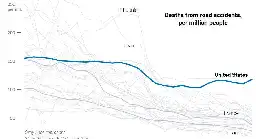
Interesting article with some great linked research and practical solutions to the issue of traffic deaths.
- “We needed to act”: Parents set up unofficial guerrilla School Street after several near misses for children cycling on narrow road used as shortcut by motorists
cross-posted from: https://lemmy.ml/post/1630538
> It's nice to see more and more people taking action against car dominance in the UK, it feels like people are starting to take road safety more seriously after years of ignoring it.
- Streetmix is an online tool which you can use to 'design and remix' your own streetstreetmix.net Streetmix
A collaborative civic engagement platform for urban design. Design, remix, and share your neighborhood street with Streetmix.
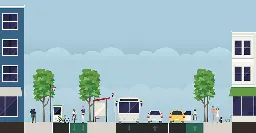
I thought Alt Urbanism might enjoy this! A fun little tool which I mainly use to redesign annoying junctions that I've cycled through. It's a really good demonstration of just how much space cars take up and how much better things could be if less roadspace was dedicated to cars.
- Your local NIMBYs don't like barrier-protected on-road bike lanes?

Your local NIMBYs don't like barrier-protected on-road bike lanes?
But you have wide footpaths?
Consider doing what Klaipeda (in Lithuania) did, and put your painted bike lane on the footpath, rather than the road.
Yeah, it's not an ideal solution, but it's better than fighting traffic.
@urbanism@slrpnk.net @fuck\_cars@lemmy.ml #Urbanism #bike #bikes #bicycle #bicycles #cyclist #bicyclist #UrbanPlanning
- Montreal Shows What a City Can Bewww.discoursemagazine.com Montreal Shows What a City Can Be
Montreal proves that—in North America, in the middle of a largely car-oriented, suburban country—a vibrant, pleasant, safe and truly urban big city can thrive. It incorporates aspects of an old European city and a modern city, reinforcing a diverse, distributed commercial and social milieu. And unli...
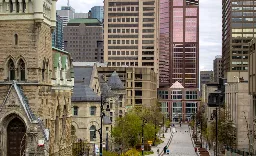
- [Video essay] "How To Build A Solarpunk City" by Andrewism

YouTube Video
Click to view this content.
> I believe our cities should belong to us. They should be cooperative, co-creative, ecological, and egalitarian spaces, by and for the people. We have so much untapped urban potential just waiting to be explored. Join me as we determine how to build a solarpunk city.
- [Video essay] "Anarchism, Marxism & the Right to the City" by Hamish Kallin
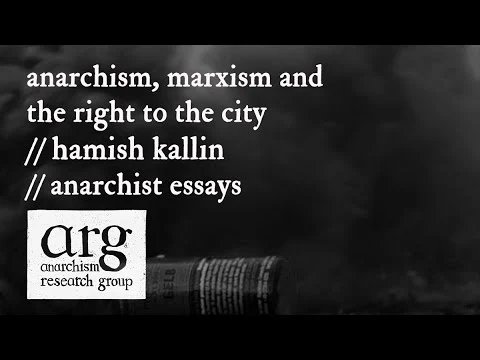
YouTube Video
Click to view this content.
> The ‘right to the city’, as a slogan, a demand, and a body of intellectual work, calls for a radically democratic city. It comes from the work of Henri Lefebvre – French philosopher, Marxist, sociologist, flamboyant revolutionary – from a short piece that came out in 1968, that canonical year in left wing mythology. The right to the city is an appealing idea, because it promises to unite disparate urban struggles on a whole range of issues – from anti-gentrification activism to reclaim the streets marches, community gardens to housing co-ops, anti-police violence campaigns to the fight for better public transport, and so on – into some kind of radical whole; a vision that coalesces around the demand for a city that is more substantially controlled by those who live in it.
- Walkable Neighborhoods Help Adults Socialize, Increase Communitytoday.ucsd.edu Walkable Neighborhoods Help Adults Socialize, Increase Community
Adults who live in walkable neighborhoods are more likely to socialize and have a stronger sense of community, report researchers at the UC San Diego Herbert Wertheim School of Public Health and Human Longevity Science.
- Dedicated bike lanes, separated from the road and the pedestrian footpath, in Vilnius, Lithuania.

Dedicated bike lanes, separated from the road and the pedestrian footpath, in Vilnius, Lithuania.
It's a concept many local councils in Melbourne and Sydney are struggling with, apparently.
\#urbanism #UrbanPlanning @Fuck\_cars@fuck\_cars@lemmy.ml @urbanism@slrpnk.net #cycling #bike #bikes #Vilnius #Lithuania #Lietuva
- How Indianapolis advocates use Public Health to advocate for better transit and urbanismurbanists.video Full Interview: Kim Irwin, Health By Design
In this series, I share full (nearly) unedited interviews, so you can see every bit of the great conversations I have when creating videos for this channel. In this video, I interviewed Kim Irwin, Executive Director of Health By Design. Health By Design advocates for transit, active transportation, ...

This is my full interview with Kim Irwin, the Executive Director of Health By Design about her work advocating for expanded transit and other urbanist policy in Indianapolis. It was a great conversation. Check out the more polished version of the video here.
- Advanced simulation of air currents can result in more habitable citiesnorwegianscitechnews.com Advanced simulation of air currents can result in more habitable cities
Densely-packed housing makes urban areas vulnerable to overheating, pollution and wind gusts, but we can work to prevent these problems.
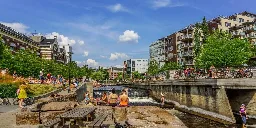
Densely-packed housing makes urban areas vulnerable to overheating, pollution and dangerous wind gusts. The effects of climate change can aggravate these problems, but we can also work to prevent them. This can be done by simulating microclimates. …
… So, how can urban planners take a warmer climate into account? Advanced simulation tools such as Computational Fluid Dynamics (CFD) are able to calculate air movements in a variety of environments. …
… CFD can also be used to make high resolution calculations of wind conditions, such as turbulence and wind speed. In this way, it will be possible to identify sites where urban wind turbines for local renewable energy generation can be profitably located.
- Oh sure, these cafes and bars in a public square in Vilnius, Lithuania, attract a great crowd on a weeknight.

Oh sure, these cafes and bars in a public square in Vilnius, Lithuania, attract a great crowd on a weeknight.
But.
Ask any Melbourne shopkeeper and they'll tell you this scene couldn't possibly be real. You know why?
No parking spots out the front.
\#urbanism #UrbanPlanning @urbanism@slrpnk.net @fuck\_cars@lemmy.ml
- Beyond Bike Lanes: What Really Impressed Us About Cycling in the Netherlands

YouTube Video
Click to view this content.
- The 20-year-old game SimCity 4 now has a new feature: walkable citiescommunity.simtropolis.com #20yearsSC4 Challenge - The Walkable City | VOTING
#20yearsSC4 Challenge A tribute to the creativity that gives us to SimCity 4 After a long wait we are ready to vote on what are the best images of th...

Well, mods have enabled walkable cities for some years, but it didn't work well. Recently, the modders of SimCity 4 invented a new way of building walkable cities. And I have to say, it's pretty fun.
SimCity 4 is a game that has well-internalized the automobile-centered urbanism of the United States. But despite these faults, community interventions through game modification can allow players to design entirely new urbanisms in the game that breaks with car-centrism.
